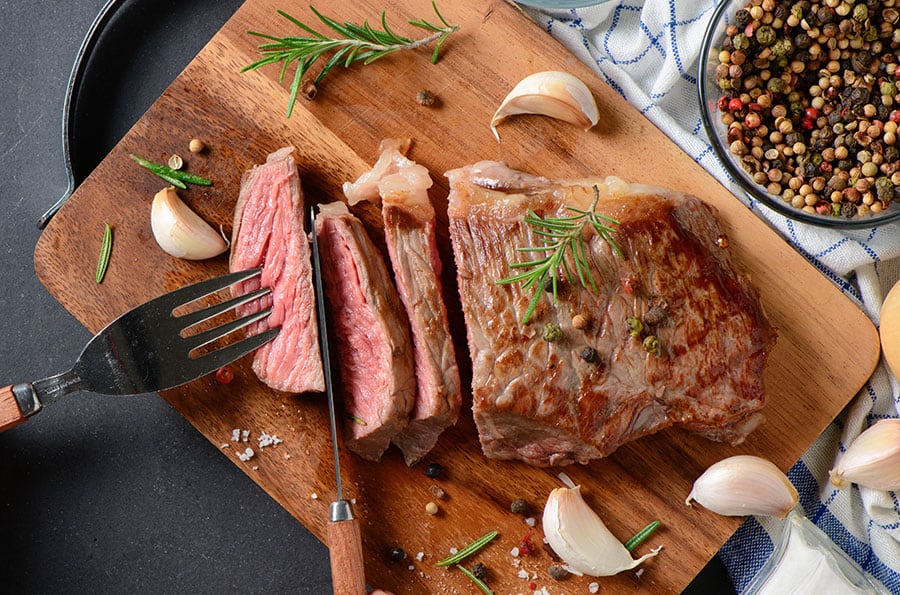Marble Hill beef grass-fed grain-finished taste defined.
Let’s explore the reasons Marble Hill beef grass-fed grain-finished taste is superior to the much-heralded, more expensive 100% grass-fed beef. First of all, 100% grass-fed beef means the cattle have eaten only grass or forage for their entire lives. Some producers do call their beef grass-fed, even if they actually finish the animals on grain for the last 90 to 160 days before harvest. The USDA does not offer any distinction to consumers for the two different types, so that high-dollar grass-fed beef you buy from the supermarket may, in fact, be grain-finished.
Ozark Prime Beef cattle are pasture-raised and typically grain-finished for 30 to 90 days before harvest. Ultimately, flavor comes down to personal preference and everyone has their own “sweet spot” when it comes to the taste they love. Energy-dense grains like corn and barley fed to cattle during finishing give a more marbled beef with a milder flavor than grass-finished beef. The difference in taste is up for debate when it comes to which is better. Some beef-lovers feel grass-fed, grass-finished beef tastes oddly enough – grassy, or gamey. Grass-fed, grain-finished beef tastes richer due to marbling and is more tender.
Marble Hill beef grass-fed grain-finished taste, while being more preferred by most beef-lovers, has a lot to do with the fact that grass-finishing isn’t feasible in Missouri. In dry or cold climates grass doesn’t grow well year-round, so grass finishing is not natural or sustainable. By the same token, local providers do not want to auction off their calves to industrial buyers for confinement raising. The best option is to supplement their diet with grain when appropriate. That is the humane, logical practice for well-cared for herds and most are fed corn and hay grown and fertilized by the same herd.
Grass-finished beef cattle eat only forage until market weight is reached and it usually takes three times longer to finish on grass vs. grain. This adds to the cost of the beef and puts more strain on the environment in which they are raised. Weather conditions and changing seasons make it impossible to grass-finish in most areas, thus again adding to the cost. All beef, regardless of how it is finished, is an excellent source of zinc, iron, protein and B vitamins. 100% grass-fed, grass-finished beef may have higher levels of vitamin A, E, and omega-3 fatty acids – but beef, in general, is a poor source for these particular nutrients. So why compromise taste and tenderness for nutrients better gotten from salmon or walnuts?

Both taste and meat composition are impacted by the foods the cattle eat. Grass-fed, grass-finished meat tends to be drier and chewier than grass-fed, grain-finished meat. 100% grass-fed steaks are often cooked with a generous pat of butter so the steak will absorb the butter’s flavor and oils. This makes minor health benefits and the exorbitant cost hardly worthwhile. Bottom line? If you’re looking to eat healthier, consider a smaller portion and enjoy that great Marble Hill beef grass-fed grain-finished taste!
Order online today, take advantage of our convenient interest-free payment plan for Jan-Mar 2019 harvest and delivery.


